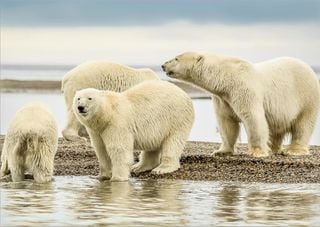High Winds Speed Cause International Flights To Reach Very High Speeds, Beating Arrival Times
International flights were quick trips over the weekend with wind speeds in the jet stream reaching over 260 miles per hour. Flights reached speeds of over 800 miles per hour.

Three different flights this past weekend were able to reach top speeds of over 800 miles per hour, thanks to a strong jet stream. Normally, commercial flights fly at a speed between 500 and 600 miles per hour.
Cruisin’ for a Bruisin’
265 mile per hour winds in the jet stream allowed three flights to reach their eastbound destinations early. This wind speed, according to the National Weather Service, is the second highest wind speed ever recorded. The changing climate is causing stronger winds in the jet stream, which is a narrow band of winds that flow west to east. More turbulence occurs in the jet stream because the surrounding air isn’t moving as fast.
Virgin Atlantic Flight 22 left Washington Dulles International Airport at 10:45 pm on Saturday and landed in London 45 minutes early. At 11:20 pm, the plane reached its top speed of 802 miles per hour at a cruising altitude of 33,500 feet. United Airlines Flight 64 out of Newark to Lisbon reached a top speed of 838 miles per hour, landing 20 minutes early.
The science behind this weekends 265 mph jet stream! A trans Atlantic flight reached an astonishing 835 mph. So Lets talk about meteorology, how climate change factors in and not breaking the sound barrier 1/ pic.twitter.com/1iT578kw7q
— Jeff Berardelli (@WeatherProf) February 20, 2024
The fastest flight this weekend was American Airlines Flight 120 from Philadelphia to Doha, Qatar. The top speed was 840 miles per hour, allowing for the flight to arrive 27 minutes early. Though these planes moved faster than the speed of sound, which is 767 miles per hour, they did not break the sound barrier. The plane’s own speed minus the wind assistance was not faster than the speed of sound.
The New Norm?
The effects of climate change will lead to more turbulence in air travel, literally and figuratively. For those flying westward as opposed to eastward, there is a stronger headwind, making for slower travel times. Flying opposite the jet stream requires more fuel, adding to planned travel time and causing disruptions.
Other events that will affect air travel with climate change are severe weather events and wildfires. Increasing frequency and intensity of weather phenomena like these will cause more delays and cancellations, as well as needing to plan alternate routes.








